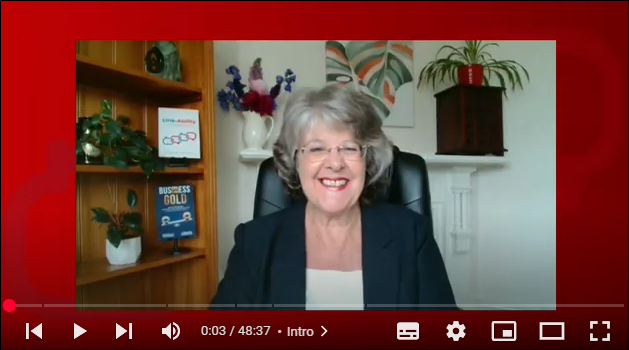
In our search for alternatives to the rapidly diminishing returns of publishing content on LinkedIn, one possibility keeps popping up: live events. Specifically, LinkedIn lives (video) and audio events.
The reasons are plentiful. Engagement rates are high. People enjoy getting involved in the discussion. It’s easy to invite people to attend and reminders are automatic. They attract new audience members who become followers or connections. They spotlight the host and guest speakers, showcasing their knowledge and expertise.
Downsides are few, chief of which is that you cannot see who is in the audience unless they add a comment. And even if they do, their settings dictate whether they show up as ‘LinkedIn member’ or by their real name. This hampers network building.
The issue of no replay on audio events has been rectified with the move to the LinkedIn live platform (although regular hosts had long since implemented workarounds).
The decision to amalgamate lives and audios onto the one platform was highly unpopular when announced. However, rather than it heralding the demise of audio events as has been widely touted, we see it as an opportunity in disguise. While some dismiss them as ‘lives without cameras’ – which is how they may be used by some people – in fact, the new-look audio opens the door to far more interesting, inclusive and exciting events.
For instance, speakers can turn their camera on if the host allows it but more importantly, speakers and hosts can add slideshows, images, videos, screenshares and much else. Imagine 5 people speaking on a particular topic all with their cameras on and the opportunity to add visual elements to the discussion. Time zone issues can be overcome through pre-recorded videos to enhance inclusion.
Having used the new format for our past 2 audio events, we’re now convinced that by moving audio events to the live platform (which is one way it can monetise events), LinkedIn has done us all a favour. True, diehard audio fans who came out of the Covid-era Clubhouse and want to retain audio in its pure form, will likely move back there or find another platform suitable to their needs. This clears the field for those who, like us, choose to embrace the changes and make events more interesting.
Mastering the technical aspects of the new platform can take time and best use of those third-party apps now needed to broadcast our events requires a monthly subscription. But while the changeover is still finding its feet – likely to continue through the first quarter of 2025 – there is ample opportunity to experiment, make mistakes and develop new best practices. Early adopters will be closely watched for ideas on what to do and not to do.
At the same time, the ideas used for audio events will likely also impact live or video events. Audience members may be invited to join the host on-camera and again, presentations, images, videos and live screens might be added in an impromptu or pre-organised way.
Another advantage of LinkedIn lives and audio events is the ability to download the recorded file and repurpose the content. The event will automatically remain visible on the host’s personal profile or company page but it can be uploaded to other platforms like YouTube, TikTok etc, or your own website, depending on the length. Or, it can be cut into shorter clips for wider reuse. The repurposing options are endless and will more likely be hampered by lack of resources than insufficient quality content.
On the downside for events, they take effort to organise. Each event needs a description, image, speakers and accompany post. It needs to be promoted and potential attendees invited. Fortunately, it is easy to bulk invite your connections. And for those you are particularly keen to have attend, there’s direct messaging, a tactic we’ve found very effective.
LinkedIn events are long past their infancy. Now, those who are running them regularly are making serious inroads into building credibility, enhancing visibility in an increasingly challenging environment and at the same time broadening their networks. Once the initial set up and mastering of the third-party platform needed to broadcast the event is complete, lives and audio events will more than give hosts (individual and company) adequate ROI for the effort put in. And given that LinkedIn does not charge to run events (yet!), barrier to entry is low.
If you want to begin hosting LinkedIn events but don’t know where to start, start by talking to us. We can share our experience and help to any level that you wish – from a few free tips to get you started to full training. Reach out to Lynnaire via DM.